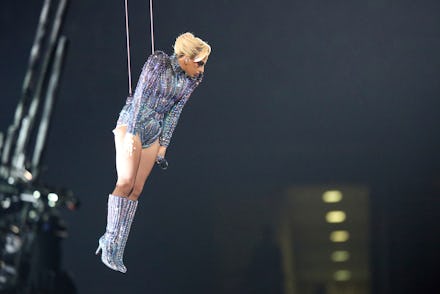"The floor is …" meme is for every millennial trying to grow up without leaving the past behind

Think back to your childhood living room. It's a rainy Saturday. You and your brother or sister or neighborhood friend are sprawled on the furniture, bored beyond belief. You have to do something to break the lull. Then: inspiration.
"The floor," you announce, "is lava."
Instantly, your humdrum house is transformed. Getting from one place to another is a matter of life and death. You leap, crawl and cling to any ledge that keeps you from being incinerated by the hot molten rock that has replaced the carpet. You take bigger and bigger risks, pushing yourself to perform the most daring acrobatics, gasping and laughing until you're short of breath. The game doesn't truly end till you knock over a lamp and a parent shouts from upstairs.
But contrary to what you might assume, the threat of lava doesn't gradually disappear over the course of adolescence. No matter where we go in life, there's going to be a floor — and that floor can become lava.
Enter the "floor is lava" meme.
Over the course of the past year, the "floor is lava" concept evolved into a viral social media trend for teens. Meanwhile, on Twitter, it merged with a genre of "3 a.m." memes about trying (and failing) to get a decent night's sleep for once.
The moment of crossover arrived in April 2016.
Twitter user @Princessofwifi posted two photos of a guy who seemed to be doing parkour in a school hallway to land her "3 a.m." punchline.
Then, the modern "floor is …" meme was formed.
It wasn't until June 2017 that people realized these images could launch a new mutation of the "floor is lava" meme in which just about anything could be substituted for "lava." Thus, we got Stalin avoiding capitalism, NBA fans dodging a nuanced take on the LeBron-vs.-Jordan argument and Twitter forestalling the fabled "edit" feature.
From here, a secondary thread emerged.
Part of the meme's evolving challenge now consists of finding other images of people not touching the floor. Simultaneously, we've seen a return to the essential theme of the "3 a.m." tweets — an irrepressible immaturity at odds with our own common sense.
It's a perfect pairing given that yelling "The floor is lava!" at your friend, thereby forcing them to jump up onto the counter at McDonald's, is not especially adult behavior. But the little kid inside us can just never resist. Likewise, we love to procrastinate, eat unhealthy fast food and ignore basic responsibilities.
Finally, there was the inevitable reversal.
People began to embrace the floor, often to their own continued disadvantage or misery. Again, the parameters of a universal childhood game were ideally suited to the crafting of "relatable" social media content. Just as we all played "the floor is lava" and at some point toppled into the imaginary inferno, we have all, without exception, plunged ourselves into the very real perils of independence — and they hurt more.
Naturally, some jokes were about more than the attempt to evade grown-up obligations while indulging our vices. We got further meme mashups, meta references, winking literalism and scathing political commentary. This is what memes do: They proliferate and diversify, refusing to obey the original rule that brought them into existence, shaking off any one simple reading.
Memes proliferate and diversify, refusing to obey the original rule that brought them into existence, shaking off any one simple reading.
Still, in each iteration, you can feel that strain of childish insistence on some arbitrary status quo. Declining to touch the floor is ultimately an abdication of our ability to affect change in the world. Only by accepting the roles and powers of leadership will we come to see that the floor is whatever we make it.
What does it all mean?
Perhaps some silly part of our prepubescent selves is worth saving. Like memes themselves, that spark of joy is also fated to slip through our fingers. You might say that the floor is forgetting who you are and what's truly important as you make your way through this terrifying century. In that sense, the meme forges a crucial connection to the past, rekindling imagination and lost innocence even as we cast a cynical eye to the future.
If we can envision the danger all around us, then we can surely conquer it, too.